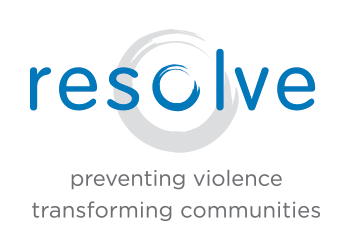A tricky thing about trauma is that it messes with our intuition. We’ve all heard people say it’s important to “trust your gut” about who is safe and who isn’t; but for those of us who have experienced trauma, our trauma response/PTS (Post-Traumatic Stress) can masquerade as intuition in the form of hypervigilance. This trauma response tells us things like, “No men are safe;” “I’d rather be safe than sorry,” rather than looking for signs that distinguish the behavior of people who may do harm from those who will not. It looks for commonalities (men, people who fit a certain profile) vs. distinguishing features (men who ignore boundaries, men who are overly eager to be helpful with a child in a way that places them alone with that child, etc.).
It can feel easier to follow broad “rules” when we haven’t been taught how to trust ourselves and our bodies.
When I took my first empowerment self-defense class with Resolve, instructors played the role of those who might do harm, allowing me to learn more about what to look for, and practice what to do in those scenarios. This helped me tremendously. By identifying red flags and how I could respond, I learned (and my nervous system learned) to relax when those red flags were not present. It helped me identify not just what danger looked like, but also what safety looks like. It helped me learn to trust myself and others.
So many students I’ve spoken with over the years have reflected about how they have structured their lives – oftentimes unknowingly – around vague and restrictive “safety tips.” Some don’t even identify as having trauma histories, and yet they learned these same messages that are very much rooted in trauma responses. These trauma responses can help protect us in the moment, but do not usually serve us long-term. In fact, disconnecting ourselves from our own ways of knowing and isolating ourselves from being with others for fear of being hurt is a trauma response – it is not how we heal. We heal in community, by connecting with others.
Profound change happens in our bodies when we practice tapping back into our intuition. Having a toolbox – a set of skills – to both understand and assess risk more accurately can translate to suddenly feeling freer to do more. The tools learned in class can create a feeling of self-efficacy – not responsibility – so more of us feel prepared to take things on should something arise. This is not a guarantee of safety, but rather, a completely fresh perspective of what freedom and living one’s life might feel like when we learn to trust ourselves.
